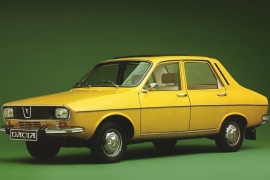DACIA 1300 Models/Series Timeline, Specifications & Photos
First production year: 1969
Engines: Gasoline
After ending the production of the Renault 8, licensed by the French automaker Renault, the Romanian automaker Dacia got the license for the modern Renault 12, which was renamed 1300.
The East-European country Romania needed cars and didn’t know how to create them. Instead of turning its attention to other East-European automakers, such as the Czechoslovakian Skoda or the Russian Moskwitch, it made a call to the state-owned French automaker Renault. After a successful cooperation with the Renault 8, which became the Dacia 1100, the Romanian government inked a deal for the modern Renault 12, which became the Dacia 1300. The nameplate came from the engine displacement, and the vehicle was produced mostly unaltered for more than a decade until 1979.
Dacia didn’t want to alter anything in the car’s design. Since its engineers didn’t know how to make a car, it was obvious that they couldn’t modify it. That was, at least at the start, true. As a result, the 1300 came with the same rectangular headlights with rounded corners as its French twin sister, the Renault 12. It featured a black plastic grille with horizontal slats where the automaker’s badge took center stage. A chromed bumper adorned with two rubber blocks protected the vehicle from small bumps. From its profile, the 1300 featured a crease along the bodywork, which started from the front fenders all the way to the back, on the rear quarter panels. The rear fascia was adorned with small-sized taillights and also a chromed bumper.
The interior was typical for those years. It featured a simple, flat dashboard with three dials in individual clusters fronting the driver, with the speedometer in the middle and other gauges and warning lights in the other two clusters. There was no tachometer since the automaker didn’t consider it was needed. The two-spoke steering wheel was made from hard plastic. One particular detail for this car was the horn installed on the left-hand stalk. Dacia kept this design feature until the mid-2000s on all its models. The 1300’s cabin had enough room for up to five adult-sized passengers, although the room in the back was limited. Dacia offered the 1300 with several options for the upholstery, either fabric or vinyl, but no power windows, brakes, steering, and air-conditioning.
Unfortunately, the Renault 12 was a car developed in the late ‘50s and early ‘60s, and the French automaker didn’t have enough experience in building front-wheel-driven vehicles. As a result, the independent front suspension was not very efficient in absorbing bumps. Moreover, the steering followed a concept developed in the 1800s, and that led to poor cornering abilities. Fortunately, though, the rear semi-independent suspension featured coil springs instead of leaf springs, helping comfort.
